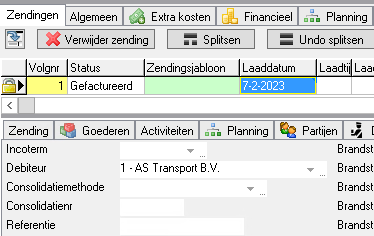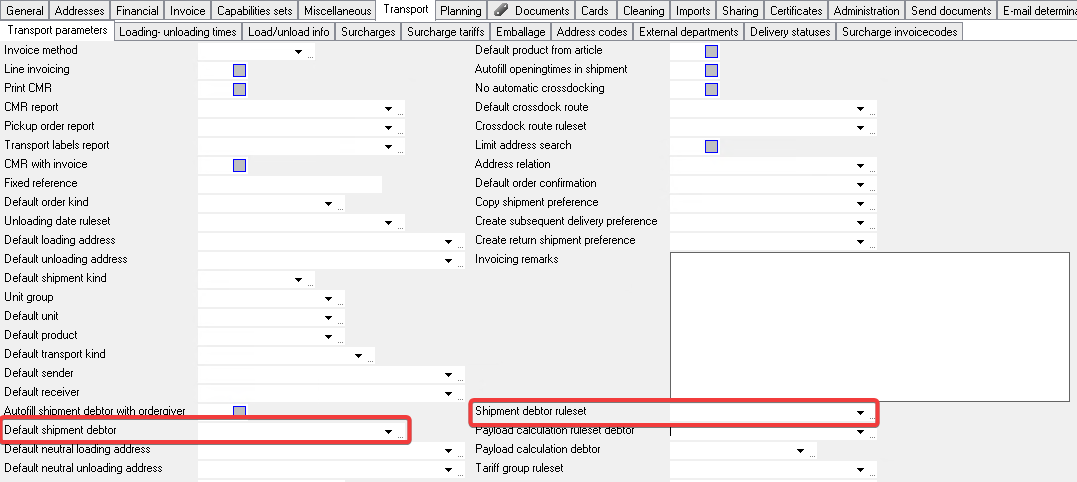It is possible to set a debtor for a shipment.
This can be done in Shipment Processing or Transportbookings in the tab sheet Financial in the field Debtor.
By default this field is empty which means the customer is also the shipment debtor.
In the example below AS Transport is filled in as shipment debtor:

Line invoicing has to be set to Yes, otherwise no debtor is filled in.
The field 'Debtor' can be filled manually, but can also be filled automatically using a setting in the screen Financial Relations:

When this is always the same debtor, this can be filled in under Default shipment debtor.
This relation is filled in under Debtor when the order is created. When a different default shipment debtor is filled in later for this relation, this won't affect existing shipments.
When the debtor differs, a Shipment debtor ruleset can be used to set the debtor based on certain conditions. This debtor ruleset is used when the shipment is changed or recalculated, so any changes in the ruleset will affect existing shipments when there are changed.
When a debtor has been set on a shipment, this is the relation that is used for determining the tariff, surcharges, etc.
¶ Debitor ruleset
In the Debtor ruleset (Main files -> Transport -> Debtor rulesets or F11 -> Debtor rulesets) the debtor is determined.
For example, below is set that when the loading address is V.C. Europe B.V. then Heijkoop Kraanverhuur should be filled in as a debtor.

As in all ruleset-screens within Transpas, the result fields (yellow background) are filled in when the conditions have been met.
Don't fill in too many conditions: then the shipments has to meet ALL of these conditions.
As debtor party you can use the following:
| Fixed debtor | The debtor that is filled in under debtor is filled in as the debtor |
| Ordergiver | Debtor stays empty (the customer is the ordergiver) |
| As is | Debtor won't change: This can be used when the debtor should be filled in manually |
| Loading address | The relation of the loading address is the debtor |
| Unloading address | The relation of the unloading address is the debtor |